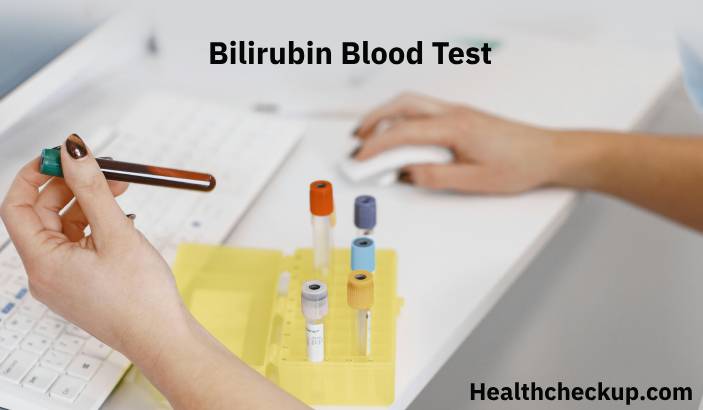Our digestive system is responsible for optimum digestion and absorption of nutrients from the food that we eat. Absorption of nutrients occurs in the small intestine by virtue of villi (hair-like projections) present on its inner-most lining.
Some individuals though carry a tendency to react adversely to certain food products. The adverse reaction to a food substance is counted as food intolerance.
Food intolerance can vary in different individuals towards different food substances in the form of intensity and severity.
What is Celiac Disease?
Celiac disease is also known by the terms celiac sprue, non-tropical sprue and gluten-sensitive enteropathy. It is an auto-immune illness due to permanent intolerance towards gluten (a type of protein found in wheat, rye and barley) present in food.
Celiac disease was previously known as a disease of the Europeans. Yet, its incidence has now become quite widespread. Various studies carried out to understand the epidemiology of celiac disease suggest that it affects about 0.5 – 1% population worldwide.
So What Happens When A Person has Celiac Disease?
When a patient who is gluten-intolerant consumes products like wheat or rye or barley, the gluten damages villi of small intestine and interferes with the process of nutrient absorption. Celiac disease primarily results in malnourishment since important nutrients including minerals and vitamins are not absorbed adequately by the small intestine.
Patients Having Celiac Diseases tend to Develop The Following Conditions
- Osteoporosis
- Thyroid disorders
- Skin disorders
- Anemia
- Infertility and repeated miscarriages
- Depression
- Neuropathies
- Migraines
- Delayed growth and development in children
This clearly shows that how celiac disease, being a disorder of the small intestine, is capable of affecting other organs as well as their functions.
Signs and Symptoms of Celiac Disease
- Bloating
- Flatulence (excessive gas formation)
- Abdominal pain or discomfort
- Nausea and vomiting
- Diarrhea
- Reduced appetite and weight loss
- Weakness or fatigue
- Joint pains
- Tingling and numbness of legs
- Stomatitis and defects in dental enamel
- Headaches and dizziness
Appearance of rash, itching or hives after eating gluten-rich food indicates allergy towards gluten.
Studies have reported marked variability in occurrence of the disease and delayed identification of it primarily due to lack of awareness among both patients and practitioners and secondarily due to unavailability to specific tests to confirm the diagnosis of celiac disease.
Celiac Disease at Home Test Preparation
- A person who desires to test for celiac disease at home must consume a gluten-rich diet before the test to get accurate results. If the patient consumes a gluten-free diet, results for the test may appear false-positive.
- There is no need to fast before the test.
- Each test kit comes with an information leaflet which provides instructions. It is important to read the instructions manual carefully before beginning the test. This will help you prepare well, avoid errors and achieve accurate results.
- It is important to remember that a test kit can be used only once. You cannot re-test on the kit you have already used.
Home testing kits are not meant to replace conventional blood tests and physician consultation. If you are suspecting presence of celiac diseases, it is important to consult the doctor because this condition can have a deleterious effect on overall health.
How To Test For Celiac Disease at Home?
Before understanding how to test for celiac diseases at home, it is important to identify who should test for it.
Persons at high risk for developing celiac diseases including
- First and second degree relatives of patients having celiac diseases
- Patients with type-1 diabetes mellitus
- Known history of having some other autoimmune diseases like rheumatoid arthritis (RA), systemic lupus erythematosus (SLE), autoimmune thyroid disorders, and autoimmune liver disorders.
- Syndromes that are prone to develop celiac diseases are Turner’s syndrome, Down’s syndrome and William’s syndrome.
These patients can test for celiac diseases at home with the help of antibody test-kits easily available over-the-counter and also online. These home testing kits can detect the presence of two antibodies:
- Endomysial antibodies (EMA)
- Tissue transglutaminase antibodies (tTG).
How To Use Celiac Disease Home Kit
Some Instructions and Information about Home Testing Kits for Celiac Diseases
- The test kits work on the principle of immune-chromatography. Each test kit provides a lancet, a micropipette, a buffer reagent and a test strip.
- Prick the index finger or middle finger with the lancet to collect blood sample.
- Wipe off the first drop of blood with sterile cotton or gauze.
- Apply gentle pressure on the pricked finger so that the blood oozes out.
- Collect blood sample in the micropipette up to a marked level.
- The test strip has a small well like structure. Dispense blood and two drops of buffer reagent into the well.
- Wait for 10 minutes.
Celiac Disease at Home Test Results Interpretation
- The test strip has markings on it – ‘C’ – control line and ‘T’ – test line.
- Negative result – when a blue color line appears under the letter C.
- Positive result – when a blue line appears under C along with reddish-purple line under T.
Celiac Disease at Home Test Advantages
- It helps in qualitative detection of the above mentioned antibodies.
- The test kits are relatively simple to use.
- It yields quick and accurate results.
- An added advantage of this test kit is that it can be easily performed for children.
Home testing kits are not meant to replace conventional blood tests and physician consultation. If you are suspecting presence of celiac diseases, it is important to consult the doctor because this condition can have a deleterious effect on overall health.
You may be advised you to undergo the following additional tests
- An antibody test for Immunoglobulin-A ((IgA). Testing for tissue transglutaminase and endomysial antibodies should be followed by a test for IgA antibodies. This is because patients which celiac diseases show low levels of Immunoglobulin-A.
- Genetic test for HLA-DQ2 and HLA-DQ8 genes.
- Endoscopic examination and biopsy of small intestine provide a confirmatory diagnosis.
Apart from blood tests and an intestinal biopsy, there are few red flag signs and symptoms, which is observed and recognized can help in supporting the diagnosis of celiac diseases. These are
- Dermatitis herpetiformis:
- Itchy, burning rash which appears symmetrically on the extensor portion of legs, arms, and buttocks.
- The rash initially presents as red discolorations on the skin (macule) which gradually develops into a reddish raised lesions (papule).
- The lesions form vesicles with fluid in them.
- Upon scratching, the skin excoriates.
- Gluten ataxia:
- In this condition, the legs are affected making it difficult for the person to walk properly.
- Spasmodic jerking of muscles can be noticed (myoclonus).
- Rhythmic involuntary movements of the soft palate (palatal tremors)
How To Treat Celiac Diseases?
The only way to treat celiac diseases is to follow a gluten-free diet since there are no specific medications or surgeries available in modern medicine to treat this condition. Eateries and restaurants these days provide you an option to choose a gluten-free meal. Even better, you can cook a gluten-free meal.
Modern medicines can be used to manage symptomatically, that is, to control nausea, vomiting, pain in abdomen, diarrhea, loss of appetite and weakness. Patients can however opt for more holistic approaches provided by alternative medicine therapies such as ayurveda, homeopathy and acupuncture or Chinese medicine.
Medically Reviewed By
Dr. Himanshi is a Homoeopathic consultant and currently working as a lecturer in Post-graduate faculty of Homeopathy, Parul University, Vadodara. Completed BHMS and MD in Homeopathy in January 2018 and also has a clinical experience of about 6 years. Personal interests include reading, spending time with family and traveling.








